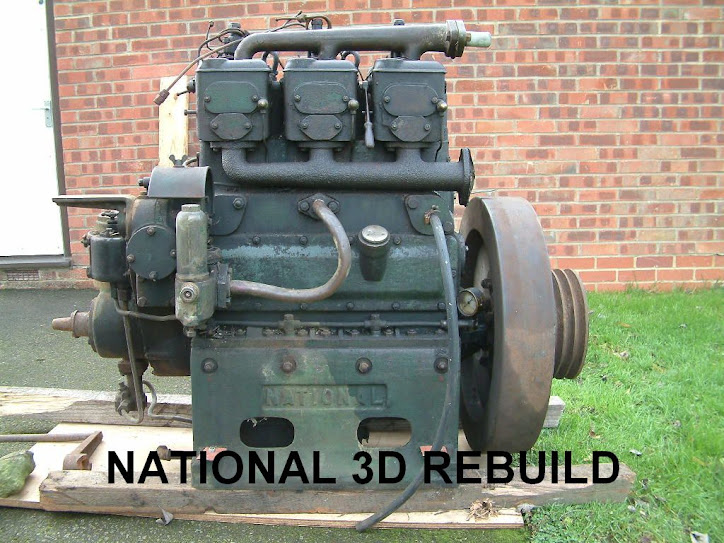I remember many years ago an old engineer (before I became an old('ish) engineer) telling me, "a piston will tell you what an engine has been doing and how its been looked after".
So, I present my piston(s) - well one of them (but the other two look very similar).

The piston assembly consists of a separate housing for the big end bearing. This in turn is bolted to the bottom of the connecting rod with the piston at the top.

From the next photo, you can see that the rings are badly gummed up and tight in the grooves. The residue is quite sticky. The problem with this is that the rings are not/have not been doing their job properly. They should be free to allow them to expand out and make proper contact with the wall of the liner. Judging by the state of the pistons, I expect that the engine had been difficult to start and would have been quite smokey. The lower and upper oil rings wouldn’t have been doing their job and I sure some lub oil would have been finding its way in to the combustion chamber and some of the products of combustion finding their way in to the crankcase.
Although its not very clear, the bottom of the piston crowns are also very carbonised and sludgy. This would indicate that the pistons were not getting very hot ‘in use’.
So what would the ‘old engineer’ make of this. A typical cause of this type of problem is lack of use, only being used for short periods of time or the engine never reaching its working temperature/lightly loaded.
A scenario that meets this? A standby generator? Spends a lot of its time idle. When it is run, it’s only for relatively short periods of time (‘on test’). Light load – standby generators are rarely loaded when being test run (bad practice). All of which lead to the engine never reaching its proper operating temperature.
So, is that what the engine was used for? It ties in well with the four groove ‘V’ belt pulley that was bolted to the original flywheel. The engine was hand start only, so if it was a ‘standby power generator’, it wasn’t for critical plant. I’ll probably never know for sure, but it’s a bit of engineering forensics!
Next will be to de-gum the rings and clean up all of the grooves. I would really like to be able to reuse them as the alternative would be RN's alloy units and that has a whole load of other knock on requirements.



No comments:
Post a Comment